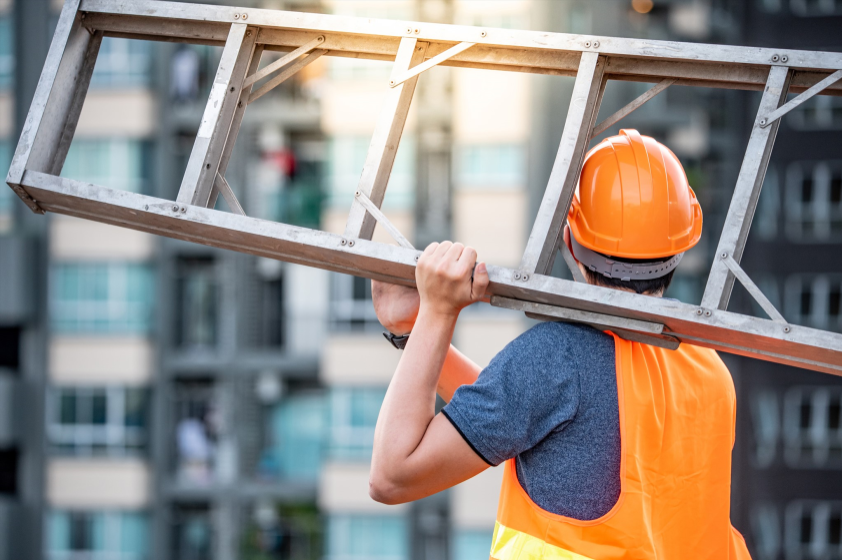Drag to resize
Working With Ladders
Drag to resize
If you have ever needed to reach high places at home or on the job, chances are that you have used a ladder. Ladders are one of the oldest and most frequently used tools in the world. Because they are the safest and easiest method to reach elevated areas, ladders can be found on nearly any construction site in the country. But as straightforward as ladders may seem, there are a long list of hazards that come with frequent use of the tool.
Due to the general purpose of ladders, falling hazards are by far the biggest threat to worker safety. In fact, falls are the leading cause of death on construction sites in America each year and account for 15 percent of accidental workplace deaths across all other industries. Studies have also shown that more than 40 percent of all fatal falls in the last decade have involved a ladder.
That said, falls are not the only hazards that workers need to be aware of when working with ladders. Electrocution hazards can occur if workers make contact with overhead power lines. And struck-by hazards usually occur when ladders are tipped over and hit someone or when ground workers are struck by objects dropped from above.
Fortunately, there are ways that workers can avoid the accidents and injuries that come along with ladder hazards. The best way to do this is by taking the necessary steps to avoid the hazards altogether. This usually includes proper planning before ladder use and good workplace safety procedures.
Some of the ways in which workers can help prevent ladder accidents and injuries include:
- Selecting the appropriate ladder for the job.
- Properly setting up the ladder for use.
- Avoid risky behavior while on a ladder.
- Regularly inspecting and maintaining all ladders.
- Following all ladder safety rules and regulations.
The first step in ladder safety is selecting the correct ladder for the job. This step is crucial, as using the incorrect ladder for a situation could lead to serious accidents and/or injuries. It is important to understand the characteristics that go into different types of ladders and the benefits that each type of ladder brings. Workers must also be able to choose a ladder based on the specific location and task being performed.
When choosing a ladder, there are four key attributes to take into consideration. They are:
- The style of ladder
- The ladder’s height
- The ladder’s Duty Rating
- The material of the ladder.
Once well-positioned atop a ladder, workers are required to perform their task at hand. Whether it be painting a ceiling, repairing a utility line, or installing a light fixture, workers must be able to successfully complete their job while also maintaining proper ladder safety. There are several tips that employees can use to remain safe on ladders while completing their trade. They include:
- Keep one hand on a side rail at all times.
- Keep your body centered on the ladder, never leaning too far to the left or right.
- Keep your body straight, with your midsection staying as close to the ladder as possible.
- Never climb too high or overextend yourself on a ladder to reach higher areas. Find a taller ladder if necessary.
- Never attempt to reposition or slide a ladder while standing on it. Always get off of the ladder and move it to the new position.
Drag to resize
Drag to resize

